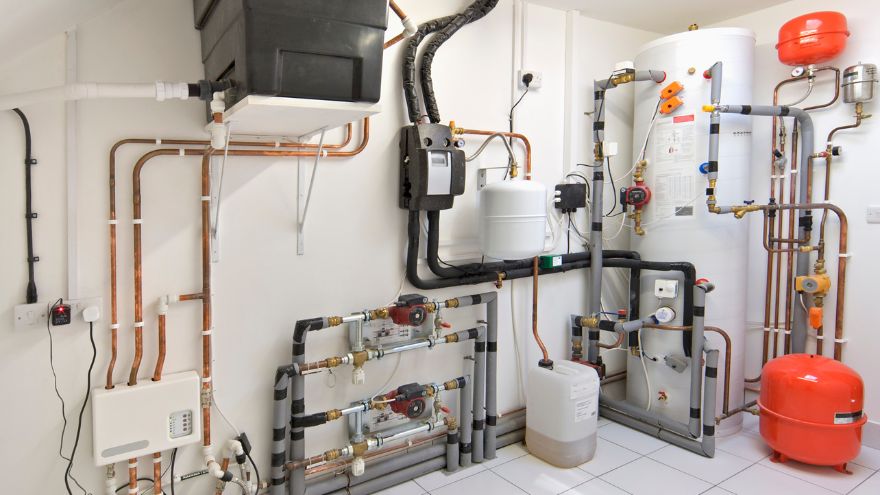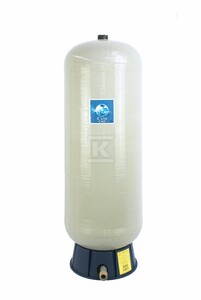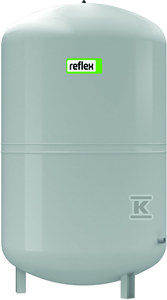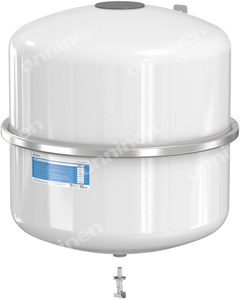The expansion vessel ensures safe and efficient operation of the heating system. Due to the importance of these elements, it is worth knowing at least basic information about them.

Expansion vessels are important elements of heating installations. Thanks to them, it is possible to reduce the risk of leakage of the entire installation and unnecessary activation of the safety valve. This is because tanks of this type absorb excess water when heated, preventing the pressure from increasing. But what about their operation and installation? Where in the installation should the expansion vessel be located? How to choose the right model? We answer these questions below.
What is the expansion vessel used for?
 As we have already mentioned, the expansion vessel is a part of the heating installation whose task is to take over excess water and, consequently, regulate the pressure in the entire system. There are two different types of expansion vessels in central heating installations.
As we have already mentioned, the expansion vessel is a part of the heating installation whose task is to take over excess water and, consequently, regulate the pressure in the entire system. There are two different types of expansion vessels in central heating installations.
The first is open tanks. Vessels of this type are used in installations with solid fuel boilers. Their location is the highest point of the heating circuit. Operation requires a direct connection to the boiler via a riser pipe. The purpose of their installation is to avoid excessive pressure increase in the event of overheating (boiling of the medium). In this case, the water vapor is discharged through an overflow pipe to the sewage system.
The second type is diaphragmatic vessels. They are intended for use only in installations with gas or oil boilers (sealed or pressurized). They are equipped with built-in automation modules that prevent water from overheating. The expansion vessel consists of two chambers - water and air - and a flexible diaphragm placed between them. When the volume of water increases as a result of heating, the air in the second chamber is compressed and thus the pressure increases.
Where is the expansion vessel installed?
 The installation location of the expansion vessel depends on its type. As we have already mentioned, the open tank should be located at the top of the installation. The expansion tank must be installed on the return to the heating boiler or solar collector. In addition to the appropriate location, the selection of its size is also important for the efficiency of the expansion vessel. When making decisions, the water capacity of the installation should be taken into account in particular. The most commonly used conversion factor says that its volume must equal approximately 4%. volume of water present in the entire installation.
The installation location of the expansion vessel depends on its type. As we have already mentioned, the open tank should be located at the top of the installation. The expansion tank must be installed on the return to the heating boiler or solar collector. In addition to the appropriate location, the selection of its size is also important for the efficiency of the expansion vessel. When making decisions, the water capacity of the installation should be taken into account in particular. The most commonly used conversion factor says that its volume must equal approximately 4%. volume of water present in the entire installation.
When it comes to expansion vessels, we should also check the static pressure of the installation, i.e. the height difference between the lowest and highest points. Some models are equipped with factory-built expansion tanks. In such a case, we only need to make sure that their capacity will be appropriate for a given installation. Otherwise, it will be necessary to install the entire safety group (expansion vessel, safety valve and pressure gauge).
Expansion vessels at the Onninen wholesaler: recommended products
 When choosing expansion vessels for a heating system, you should take into account not only the parameters of a specific model, but also its quality. It is extremely difficult to assess it without professional knowledge and knowledge of the industry. Therefore, it is worth using the recommendations of specialists and choosing products from reputable, high-quality brands. A wide selection of expansion vessels proven in many installations can be found in the offer of our Onninen store.
When choosing expansion vessels for a heating system, you should take into account not only the parameters of a specific model, but also its quality. It is extremely difficult to assess it without professional knowledge and knowledge of the industry. Therefore, it is worth using the recommendations of specialists and choosing products from reputable, high-quality brands. A wide selection of expansion vessels proven in many installations can be found in the offer of our Onninen store.
To be sure of failure-free and long-term operation of the entire installation, it is worth choosing expansion vessels from manufacturers such as Global Water (e.g. vertical expansion vessel ), Reflex N-400 expansion vessel ) or Flamco Meibes AIRFIX A35 expansion vessel ). When choosing a given vessel and assessing compatibility with a specific installation, you can use the professional help offered by our employees. In addition, we guarantee fast delivery and efficient processing of each order.